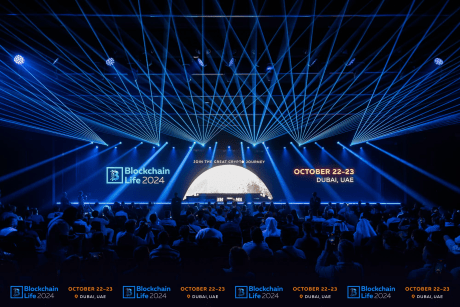Welcome Mickael. I’m excited for this chat. Tell us a bit about yourself to begin.
I’m excited too. Thanks for having me. I’m a serial entrepreneur who built and scaled multiple businesses, across industry verticals, in the past 20+ years. From a web agency to bid data and SaaS in real-estate and, now, blockchain with Ternoa.Bitcoin having is around the corner, institutional adoption is rising, and the bull market is here. What’s mission-critical for this phase?
Right. What are the biggest security and scalability challenges now?
It’s funny, actually. What Vitalik called the Scalability Trilemma is still the determining challenge. We still haven’t perfectly balanced security, scalability, and decentralization. We’ll get there soon. Ethereum’s PoS mechanism has significantly improved its security, interoperability, and decentralization. Using GHOST, LMD, and other modules like that, it sets new standards in on-chain security incentivization. L2s, on the other hand, have successfully achieved higher transaction speeds and throughput for lower costs. While inheriting the underlying L1’s security. But they’re mostly Rollups, using either validity proofs or invalidity proofs. Both have integrity issues and specific problems: long confirmation time, higher proof-generation costs, etc. Plus, zkEVMs are highly complex, meaning they’re highly prone to bugs and lapses. Relying on single proofs is thus not enough. We need multi-proof methods to securely scale at desired levels. That’s what we’re optimizing for, with Ternoa’s dual-layer framework.Tell us more about Ternoa. It’s a Layer-1 key management framework, right? With a Fortress.
We started as an L1 key management system helping developers build secure dApps to scale Web3. You’re right about that. But we’re now growing our reach and developing new use cases for our TEE-based tech stack. The Fortress is a core element of our TEE-based security architecture. With functionalities like ‘Secret’ and ‘Capsule’, it’s an open-source means for developers to encrypt, safeguard, store, and transfer digital assets or sensitive data. Now, as multi proofs become imperative, we’re doubling down on our dual-layer framework. It combines zkSNARKs and a unique Trusted Execution Environment (TEE) technology. We’re using an alternative proof system for this, aka SGX Proofs. It lets you verify the proofs generated by our zkEVM. Think of it as double-checking the results before pushing them to the L1 for finality. I won’t go into the details. You can read our extensive Medium articles We partnered with Intel and Avail to implement our ideas. Although SGX faced issues like side channel attack vulnerabilities, etc., in the past, working with leaders like Intel helps us mitigate such risks. Avail DA is the only solution with DA Sampling and Validity Proofs combined. The obvious choices for us. Ternoa’s L1 Substrate core supports 50+ applications and 600,000+ on-chain events weekly. We have 80+ builders and partners, 300+ nodes, 2000+ nominators, and a 200K+ community on social media. So we’re making solid progress and heading in the right direction to make Ternoa a global leader in web3 security and scalability.Absolutely! I’ll mirror Avail CEO, Anurag’s view and say you’re establishing benchmarks for future rollups. So, before we wrap, what’s your best advice for the ‘next wave’ of newcomers?
For businesses and entrepreneurs, I’d say be resilient and keep building. Invent solutions and deliver real value through your products. Find your market. Never give up. And for users, try new things. Don’t let fear and uncertainty stop you. Embracing innovation is the only way forward. Even if the challenges are huge. But most importantly, DYOR! Peace.











